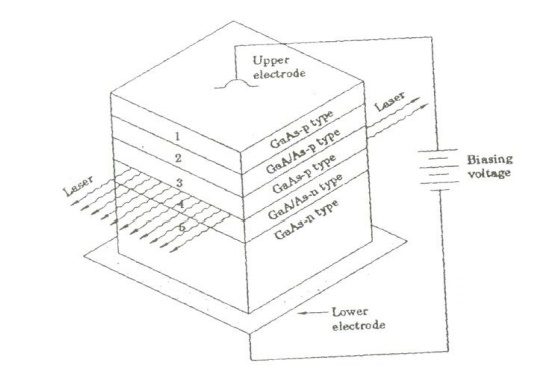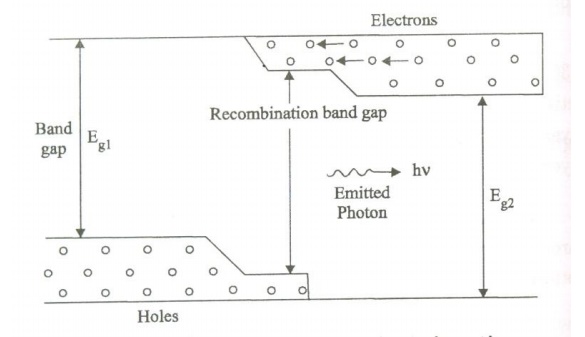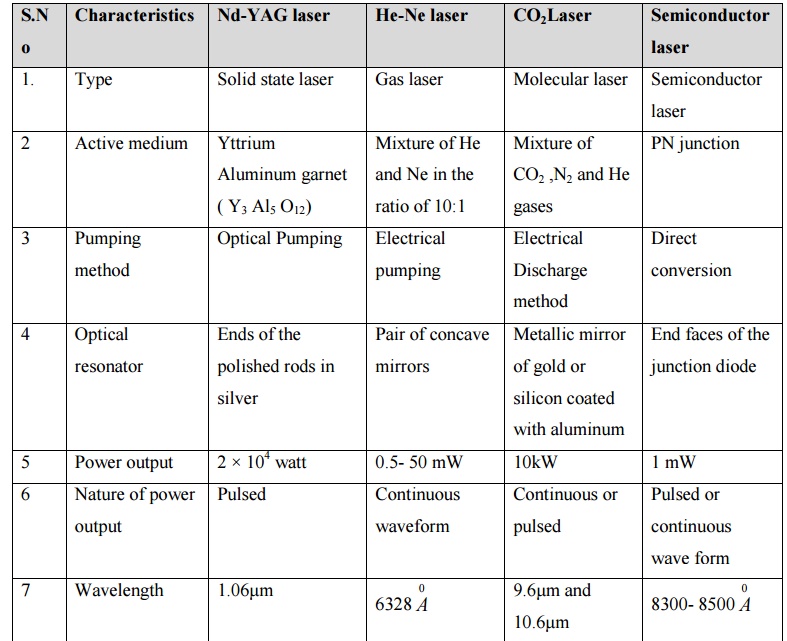Chapter: Physics : Photonics and fibre Optics
Hetro Junction Laser: Principle, Construction, Working, Characteristics, Advantages, Disadvantages and Applications
MHETERO JUNCTION LASER
A pn junction made up of the different materials in two regions ie., n type and p type is known ad hetrojunction.
Principle:
When a PN junction diode is forward biased, the electrons from the n region and holes from the p region recombine with each other at the junction. During recombination process, light is released from certain specified direct band gap semiconductors.
Construction:
This laser consists of five layers as shown in the figure.

A layer of Ga-As p – type (3rd layer) will act as the active region. This layer is sand witched between two layers having wider band gap viz GaAlAs-p – type (2nd layer) and GaAlAs-n-type (4th layer).
The end faces of the junctions of 3rd and 4th layer are well polished and parallel to each other. They act as an optical resonator.
Working:
When the PN junction is forward biased, the electrons and holes are injected into the junction region. The region around the junction contains large amount of electrons in the conduction band and holes in the valence band.
Thus the population inversion is achieved. At this stage, some of the injected charge carriers recombines and produce radiation in the form of light.

When the forward biased voltage is increased, more and more light photons are emitted and the light intensity is more. These photons can trigger a chain of stimulated recombination’s resulting in the release of photons in phase.
The photons moving at the plane of the junction travels back and forth by reflection between
0
two sides and grow its strength. A coherent beam of laser having wavelength nearly 8000 A emerge out from the junction region.
Characteristics:

TITLE and Description
1. Type : It is a heterojunction semiconductor laser
2. Active medium : PN junctions made from different layers.
3. Pumping method : Direct conversion method
4. Power output : The power output of laser beam is 1 mW
5. Nature of the Output : Continuous wave form
6. Wavelength of the output : Nearly 8000o A
Advantages:
1. It produces continuous wave output.
2. The power output is very high.
Disadvantages:
1. It is very difficult to grow different layers of PN junction.
2. The cost is very high.
Applications:
1. This type of laser is mostly used in optical applications
2. It is widely used in computers, especially on CD-ROMs.
Comparison Chart of different types of Lasers

Related Topics